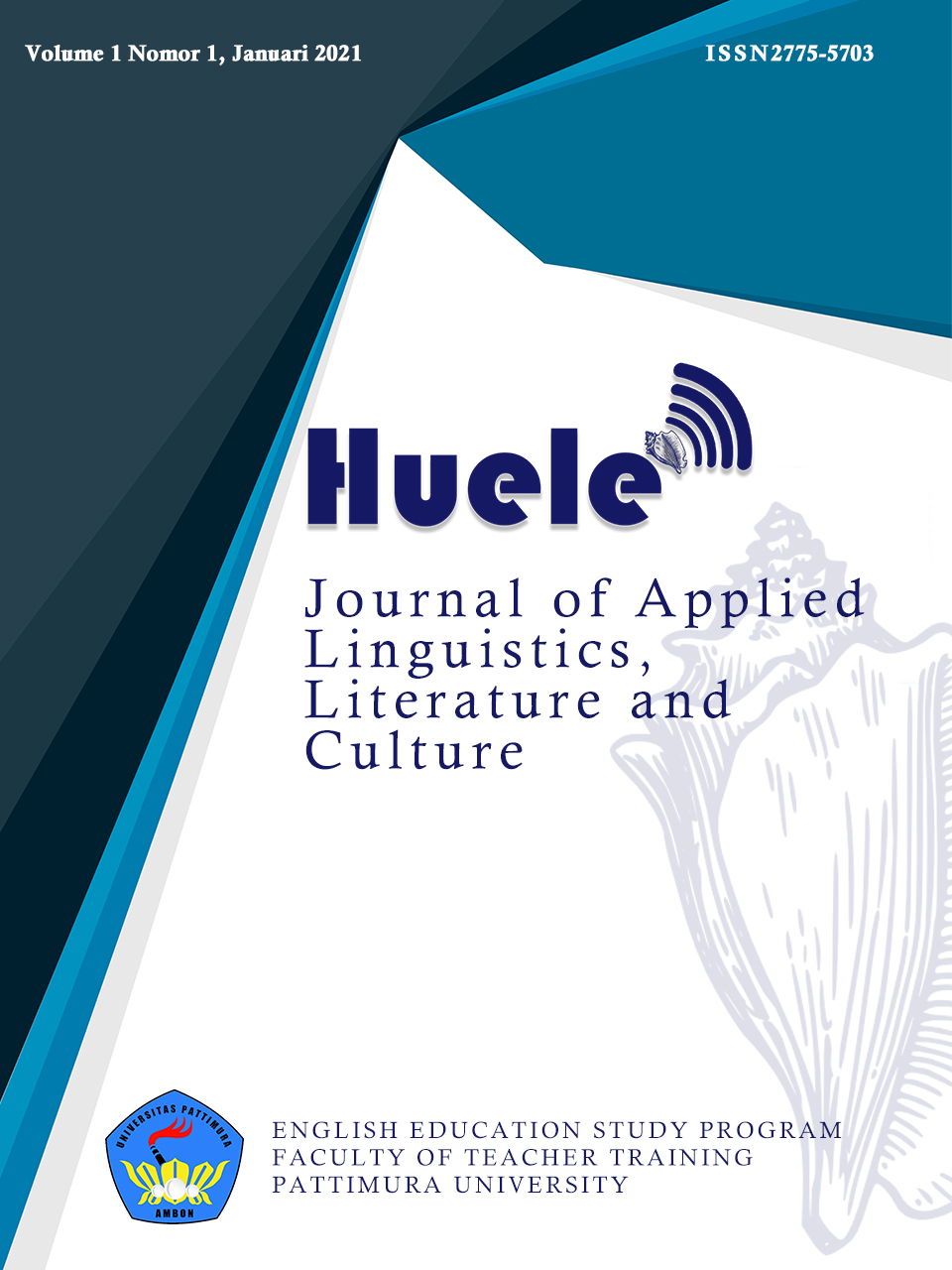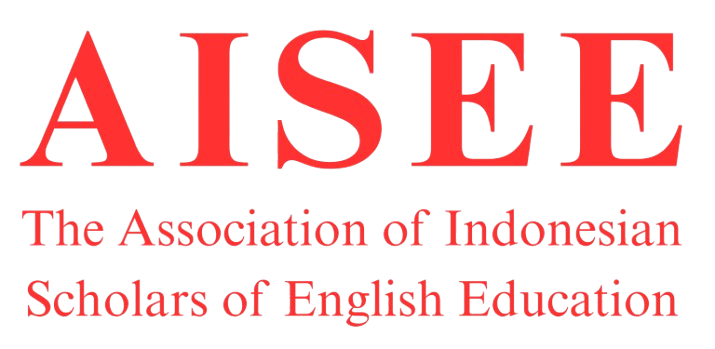Building Students' Interaction by Using Talking Chips Technique: A Classroom Action Research
Abstract
This study focuses on building students' interaction by using the talking chips technique, and it aims to find out how the talking chips technique can be applied to build students' interaction and describe the responses toward the implementation of this test of this research was students of SMA Negeri 14 Ambon consisting of 26 students (4 groups) in XI-Science class. The data was collected from classroom observation, weekly observation, and questionnaires. The design was classroom action research. The study concludes that this technique is successfully applied to build students' interaction, and the students have a positive response towards the implementation of this technique. Applying the Talking Chips technique in the learning-teaching process gives students more opportunities to be actively involved and work cooperatively in learning activities. This technique also motivates students to speak or express their ideas; therefore, it has a good impact on the students in building their interaction in the classroom.
Downloads
References
Angelo, T. A., & Cross, K. P. (1993). Classroom assessment techniques: A handbook for college teachers (2nd edition). In San Francisco: Jossey-Bass.
Ellis, R. (1991). The Interaction Hypothesis: A Critical Evaluation. Regional Language Centre Seminar.
Emerson, T. L. N., English, L., & McGoldrick, K. M. (2016). Cooperative learning and personality types. International Review of Economics Education. https://doi.org/10.1016/j.iree.2015.12.003
Fitria, R. (2017). Improving The Students ’ Speaking Skill Through Talking Chips ( Tc ): A Classroom Action Research On Second Semester Students Of English Study. Inovish Journal.
Gass, S. M., & Mackey, A. (2014). Input, interaction, and output in second language acquisition. In Theories in Second Language Acquisition: An Introduction. https://doi.org/10.4324/9780203628942-15
Johnson, D. W. (1981). Student-Student Interaction: The Neglected Variable In Education. Educational Researcher, 10(1), 5–10. https://doi.org/10.3102/0013189X010001005
Kagan, S., & Kagan, M. (1998). Kagan Strategies. Multiple Intelligences: The Complete MI Book.
Little, D. (2006). The Common European Framework of Reference for Languages: Content, purpose, origin, reception and impact. Language Teaching. https://doi.org/10.1017/S0261444806003557
Long, D. R., & Rivers, W. M. (1988). Interactive Language Teaching. Hispania. https://doi.org/10.2307/342916
Long, M. H. (1996). The Role of the Linguistic Environment in Second Language Acquisition. In Handbook of Second Language Acquisition. https://doi.org/10.1016/b978-012589042-7/50015-3
Mackey, A. (1999). Input, Interaction, And Second Language Development: An Empirical Study of Question Formation in ESL. Studies in Second Language Acquisition. https://doi.org/10.1017/S0272263199004027
Muklas, M. (2017). Talking Chips Technique To Teach Speaking. Journal of English Language Education and Literature.
Newsome, G. L., Carr, W., & Kemmis, S. (1988). Becoming Critical: Education, Knowledge, and Action Research. Canadian Journal of Education / Revue Canadienne de L’éducation. https://doi.org/10.2307/1495177
Ohta, A. S. (2005). Interlanguage pragmatics in the zone of proximal development. System. https://doi.org/10.1016/j.system.2005.06.001
Oller, J. W., & Krashen, S. D. (1988). The Input Hypothesis: Issues and Implications. Language. https://doi.org/10.2307/414800
Piaget, J. (1952). The origins of intelligence in children New York. In International Universities Press.
Richards, J. C., & Rodgers, T. S. (2001). Approaches and Methods in Language Teaching. In Approaches and Methods in Language Teaching. https://doi.org/10.1017/cbo9780511667305
Sheen, Y. (2010). Differential effects of oral and written corrective feedback in the ESL classroom. Studies in Second Language Acquisition. https://doi.org/10.1017/S0272263109990507
Slavin, R. E. (2010). Cooperative learning. In International Encyclopedia of Education. https://doi.org/10.1016/B978-0-08-044894-7.00494-2
SUDJANA, N. I. (2004). Penelitian dan Penilaian Pendidikan. Sinar Baru Algensindo.
Syaripudin, U., & Nuristiana, P. (2018). The Use of Talking Chips Technique in Students’ Impromptu Speaking. Academic Journal Perspective : Education, Language, and Literature. https://doi.org/10.33603/perspective.v1i2.1617
Vygotsky, L. S. (1978). Mind in society: Development of higher psychological processes. In Harvard University Press.
Wagner, E. D. (1994). In Support of a Functional Definition of Interaction. American Journal of Distance Education. https://doi.org/10.1080/08923649409526852
Webb, N. M. (1982). Student Interaction and Learning in Small Groups. Review of Educational Research. https://doi.org/10.3102/00346543052003421
Wubbels, T., & Brekelmans, M. (2005). Two decades of research on teacher-student relationships in class. International Journal of Educational Research. https://doi.org/10.1016/j.ijer.2006.03.003
Copyright (c) 2021 Susan Warahuwena, Helena M. Rijoly

This work is licensed under a Creative Commons Attribution-NonCommercial-ShareAlike 4.0 International License.







